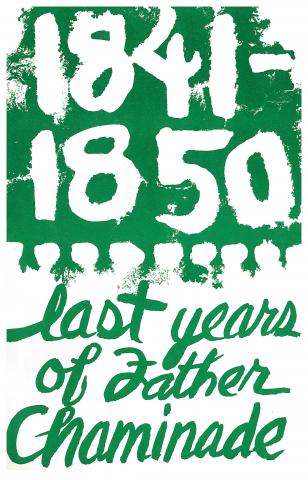by Vincent R. Vasey, SM
152 pgs.
Unwittingly, for over 100 years, any person telling the story of the final period of Father Chaminade’s life misrepresented it. In fact, the clouds that formed during the stormy events of 1841-1850 hung over members of the religious institutes he founded. For a half century,Chaminade was relegated to little more than a footnote in the annals of SM history. The calumny threatened to truncate the progress of his toward being declared a saint. Complicating the matter is the fact that 50 years after the drama, a major biographer of Father Chaminade's found it a problem of conscience to disclose the whole truth and couched the sequence of events in a framework that was more palatable, but still not truthful.
All this changed with the work of Father Vincent Vasey, SM. In 1966 he was elected Procurator General of the Society and Postulator of the Cause of Father Chaminade. He researched notes, letters, and legal documents related to the case. In 1970, he published the remarkable findings on the actual course of this aspect of Father Chaminade’s history.
In Last Years of Father Chaminade, Vasey first details the reasons that Good Father Joseph Simler, SM, felt obligated to let new clouds form.
Near the turn of the 20th century, while Superior General of the Society of Mary, Father Simler unearthed documents that uncovered the full story of Chaminade. He wrote an incredible biography reclaiming the vision and wisdom of the Founder for his followers. However, Simler decided, out of loyalty to his predecessors, to cast Chaminade during his last years as a victim of senility, again blocking the rays of truth.
Vasey, with a degree in canon law and a doctor of law degree, lays out the complicated legal issues that resulted in lawsuits against the Society and eventually, the resignation of Father Chaminade as Superior General. However, one need not be a lawyer to understand the terrible misdeeds chronicled in this book. And, one does not need an analytical reading of this text to see the pain of Chaminade in his final days. Vasey rights a terrible wrong. While relaying the complete story, he lovingly shows the courage, genius, and holiness of Chaminade.

